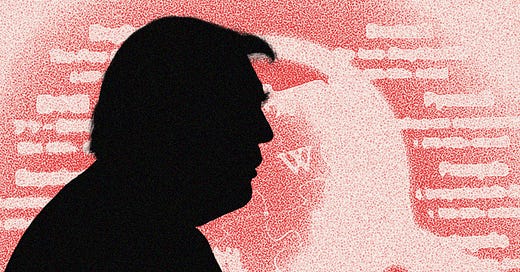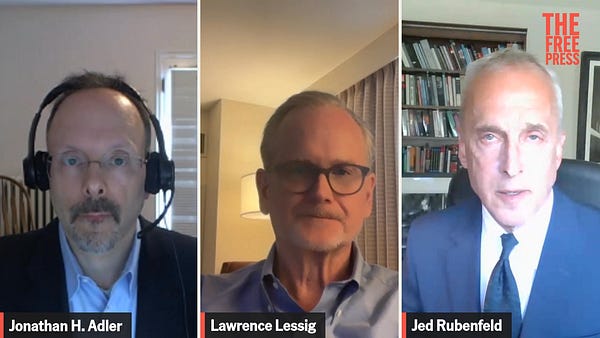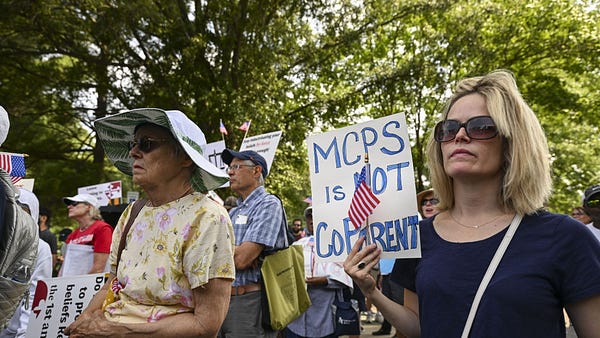
It has been almost four years since George Floyd’s death in police custody sparked riots in American cities and protests around the world. Since then, the public, thanks to the reporting of mainstream journalists, has settled on a consensus about what happened to Floyd on the evening of May 25, 2020: officers were in the process of arresting Floyd for paying with counterfeit money at a convenience store when Officer Derek Chauvin, with conscious cruelty, subjected him to his “signature move”—a knee on the neck—cutting off his oxygen supply and murdering him. Officers J. Alexander Kueng, Thomas Lane, and Tou Thao, rather than intervene, aided and abetted Chauvin’s crime.
If journalism is the first draft of history, then this draft is now due for a major revision.
A new documentary by Alpha News, The Fall of Minneapolis, challenges three key parts of the story, now accepted as fact:
The knee-on-the-neck hold was Chauvin’s signature move, as opposed to a standard maneuver practiced by the Minneapolis Police Department (MPD).
Asphyxiation was the cause of George Floyd’s death.
Chauvin received a fair trial by an impartial jury.
I had never heard of Alpha News before this documentary. The producer of the film, Liz Collin, was a successful reporter and anchor at WCCO, Channel 4, in Minneapolis for many years before the death of George Floyd derailed her career. The sticking point was that her husband, former lieutenant and president of Minneapolis police union Bob Kroll, defended the four officers who arrested Floyd, denounced the rioters, who had recently captured and burned down a police precinct, as a “terrorist” movement, and highlighted Floyd’s long rap sheet in a letter to police union members.
Both Kroll and Collin received an intense cancellation—including a protest outside their home—which led WCCO to push Collin out of her anchoring job, and eventually led her to leave WCCO and join Alpha News. While there, she teamed up with the film’s director, Dr. JC Chaix, a former police officer and volunteer firefighter, to make The Fall of Minneapolis.
When people think of George Floyd, they think of a viral clip captured and uploaded by a bystander. The infamous clip appeared to show Chauvin’s knee on Floyd’s neck for 8 minutes and 46 seconds (later amended to 9 minutes and 29 seconds) along with Floyd’s bone-chilling screams: “I can’t breathe!”; “Mama!”; “I’m gonna die!”

Like everyone who watched this clip, I was horrified when I saw it. I could not understand why Chauvin continued to keep his knee on Floyd’s neck when he clearly couldn’t breathe. I couldn’t even understand why they put him belly-down on the pavement in the first place—a humiliating and uncomfortable position—rather than in the back of the squad car.
But the viral clip, as so many often do, started in the middle of the story. When Judge Peter Cahill allowed full footage (with multiple angles) to become public in August 2020, it showed three things that were not obvious from the viral clip:
First, the officers spent several minutes trying to get Floyd into the back of the squad car before agreeing, at Floyd’s request, to place him on the ground instead. (Floyd had complained of claustrophobia in the back of the squad car.)
Second, Chauvin’s knee was not on Floyd’s neck for 9 minutes and 29 seconds. It was probably on his neck for at most 4 minutes, after which it appeared to be “above the shoulder blades,” as one of the prosecution’s own witnesses conceded during Chauvin’s criminal trial in 2021.
Third, and most importantly, Floyd was saying that he couldn’t breathe before he was placed on the ground, as this clip from the documentary shows below:
The court of public opinion may have made up its mind based on a single out-of-context clip. But Chauvin’s trial in 2021 represented a chance to revise that consensus in light of all the evidence. In order to convict Chauvin of felony murder—which differs from more serious murder charges in that it requires neither premeditation nor intent to kill—the prosecution had to prove each element of the crime beyond a reasonable doubt. Among other things, they had to prove that (1) Chauvin’s actions constituted assault (or attempted assault), and (2) that Chauvin’s actions caused the death of George Floyd.
The documentary throws both claims into doubt. What I discovered by making my own calls and confirming the documents shown in the documentary is that these key claims are not certain at all.












